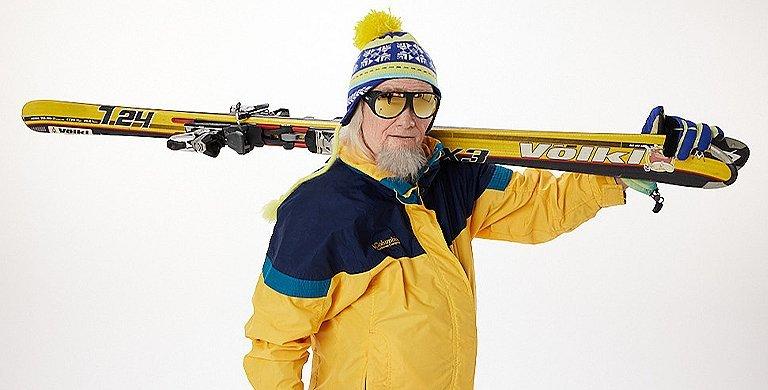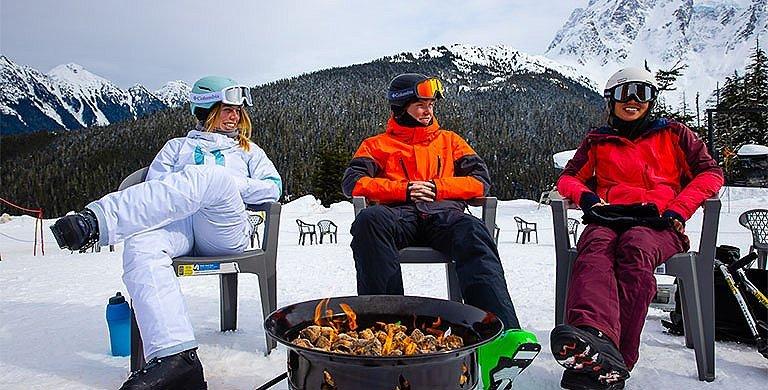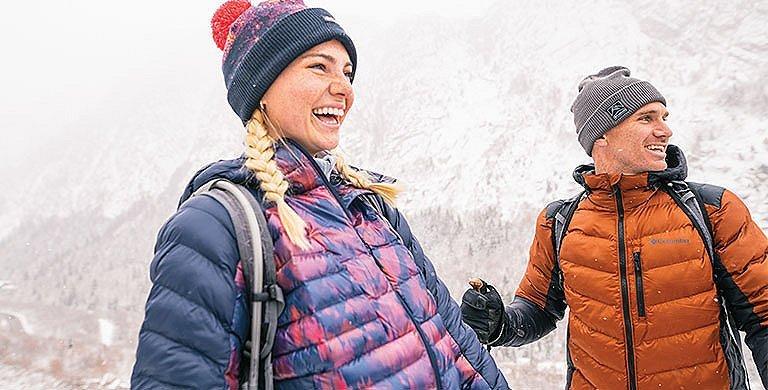SKI & SNOW
What to Wear on Your First Snowshoeing Trip
Our beginner’s guide to snowshoeing explains everything you need to bring on your adventure
BY TROY ASLPUND
If you’re looking to get out and explore the snow-covered outdoors during the heart of winter, there’s no better way to do it than with a snowshoeing adventure. Not only is snowshoeing easy to learn, it requires very little specialized equipment and can be done practically anywhere there’s snow—a mountain area, a golf course, or even just your neighborhood park after a snowstorm. But before you give snowshoeing a try, you need to know what to wear (conveniently, there’s some overlap with what to wear skiing). We’ll explain everything you need to bring snowshoeing and provide a complete equipment checklist, so you’re prepared for anything the trail has in store.
Click here to skip to our Complete Snowshoeing Checklist.
What to bring snowshoeing
The good news is that, gear-wise, there’s not a lot of equipment you need for snowshoeing—basically just a pair of snowshoes. Trekking poles can be helpful, especially if you’re wearing a heavy pack or have knee issues, but they are by no means required.
When it comes to clothing, bring the same clothes you’d wear for winter hiking or for any outdoor activity that requires you to stay warm in cold weather. Key must-haves include high-quality winter boots, a warm jacket, and a good pair of snow pants.
Of course, there are other things you’ll want—plenty of layering options for changing weather conditions, dry clothes for the ride back home, and some other essentials we’ll cover below. Keep in mind that there will be some variables based on your plans. An overnight excursion, for example, will obviously require more gear than you’ll need for a family day trip to the mountain (not to mention a solid understanding of how to camp in the snow).
When it comes to clothing, bring the same clothes you’d wear for winter hiking or for any outdoor activity that requires you to stay warm in cold weather. Key must-haves include high-quality winter boots, a warm jacket, and a good pair of snow pants.
Of course, there are other things you’ll want—plenty of layering options for changing weather conditions, dry clothes for the ride back home, and some other essentials we’ll cover below. Keep in mind that there will be some variables based on your plans. An overnight excursion, for example, will obviously require more gear than you’ll need for a family day trip to the mountain (not to mention a solid understanding of how to camp in the snow).
Packing Pro Tip 1: Understand the importance of dressing in layers
While your snowshoes will keep your feet on top of the snow, moving through the snow is 100% powered by you, so you can quickly overheat if you’re not wearing breathable clothing. And if your sweat has nowhere to go, your clothing will get wet and stay wet, leaving you cold, wet, and miserable.
Snowshoeing can involve a range of temperatures and weather conditions—from clear and cold to snowy and windy, sometimes all in the same day. So you need to be prepared for anything, and the best way to do that is by layering your clothing.
Knowing how to layer for cold weather will go a long way in helping you to fully enjoy your day, because layers not only provide you with warmth, they provide options by allowing you to adjust to both the conditions and your activity level.
Snowshoeing can involve a range of temperatures and weather conditions—from clear and cold to snowy and windy, sometimes all in the same day. So you need to be prepared for anything, and the best way to do that is by layering your clothing.
Knowing how to layer for cold weather will go a long way in helping you to fully enjoy your day, because layers not only provide you with warmth, they provide options by allowing you to adjust to both the conditions and your activity level.
The three components of proper layering are:
1. Baselayer: A thin inner layer that sits directly on your skin and wicks away sweat. Baselayers are typically made from a quick-drying, sweat-wicking material. They come in varying weights, based on the conditions they are designed to take on. For especially cold weather, look for technologies like Omni-Heat™ that provide additional warmth by reflecting your body heat back to you.
2. Midlayer: A thicker middle layer that provides insulation and keeps you warm. This middle layer typically consists of an insulated jacket, fleece, or knit. If you choose a puffer jacket, try one with special reflective technology like Omni-Heat™ Infinity, and if you opt for fleece, try one with Helix technology
3. Outer shell: A thin layer that goes on the outside to offer weather protection. This outermost layer, typically some sort of shell, protects you from rain, wind, snow, and other elements. Its job is to keep the underneath layers dry, so it’s best to look for a shell that is both fully waterproof as well as breathable to keep you dry inside and out. In milder conditions, this layer might be kept in your pack, but it’s a good idea to always have it with you.
2. Midlayer: A thicker middle layer that provides insulation and keeps you warm. This middle layer typically consists of an insulated jacket, fleece, or knit. If you choose a puffer jacket, try one with special reflective technology like Omni-Heat™ Infinity, and if you opt for fleece, try one with Helix technology
3. Outer shell: A thin layer that goes on the outside to offer weather protection. This outermost layer, typically some sort of shell, protects you from rain, wind, snow, and other elements. Its job is to keep the underneath layers dry, so it’s best to look for a shell that is both fully waterproof as well as breathable to keep you dry inside and out. In milder conditions, this layer might be kept in your pack, but it’s a good idea to always have it with you.
Packing Pro tip 2: Choose high-quality footwear
Because snowshoes are designed to work with your own boots, choosing the right winter boot is vital to having a good experience. A cheap pair of boots will leave your feet cold and wet. Needless to say, it’s worth investing in the highest-quality winter boots you can afford. The best boots for snowshoeing are waterproof, insulated, and breathable. And since the boots aren’t specific to snowshoeing, they’re an investment that will pay off all winter long.
Snowshoes will provide the traction you need on the snow, but you’ll also want your boots to have excellent traction, like Adapt Trax™, to give you the versatility of wearing them on the way to the mountain, in the icy snow-packed parking lot, or on your next winter hike.
And don’t forget to pair your high-quality boots with high-quality socks. The best socks for snowshoeing will provide both warmth and moisture-wicking features—the same things you’d look for in a skiing or snowboarding sock.
Snowshoes will provide the traction you need on the snow, but you’ll also want your boots to have excellent traction, like Adapt Trax™, to give you the versatility of wearing them on the way to the mountain, in the icy snow-packed parking lot, or on your next winter hike.
And don’t forget to pair your high-quality boots with high-quality socks. The best socks for snowshoeing will provide both warmth and moisture-wicking features—the same things you’d look for in a skiing or snowboarding sock.
Packing Pro Tip 3: Stay warm and dry with the right jacket and pants
Like any winter outdoor sport, staying warm and dry is essential. Enjoyment is tough to come by if you’re cold and wet, for snowshoeing or anything else for that matter. So make sure you’re comfortable all day long by choosing the right jacket for snowshoeing—one that is not only warm and waterproof but also breathable, so sweat doesn’t build up inside your jacket as you hike through the snow.
Because snowshoeing constantly exposes your legs to snow, you’ll need a good pair of snow pants or snow bibs too. The best pants for snowshoeing are ski or snowboard pants that are warm, waterproof, and breathable to keep you dry inside and out. Most ski pants will also have internal leg gaiters to help keep the snow out of your boots, but if you’ll be trekking through deep powder, you might consider adding a pair of external gaiters to your packing list.
And of course, make sure to remember a hat and gloves for everyone.
Because snowshoeing constantly exposes your legs to snow, you’ll need a good pair of snow pants or snow bibs too. The best pants for snowshoeing are ski or snowboard pants that are warm, waterproof, and breathable to keep you dry inside and out. Most ski pants will also have internal leg gaiters to help keep the snow out of your boots, but if you’ll be trekking through deep powder, you might consider adding a pair of external gaiters to your packing list.
And of course, make sure to remember a hat and gloves for everyone.
Snowshoeing packing checklist
Here’s a checklist of essential as well as recommended gear to help make sure you don’t leave anything behind:
Essential:
Essential:
- Snowshoes
- Winter boots
- Winter jacket or rain shell
- Snow pants
- Insulated jacket or fleece
- Baselayer top
- Baselayer bottom
- Warm hat
- Gloves
- Socks (bring an extra pair)
- Dry clothes for the drive home
- Trekking poles
- Neck gaiter
- Sunglasses
- Sunscreen
- Lip balm
- Cell phone and charger
- Area map
- Compass
- GPS device
- Knife or multi-tool
- Lighter or waterproof matches
- Headlamp and extra batteries
- First aid kit
- Bivvy sack or emergency shelter
- Filled water bottle
- Food (bring more than you think you’ll need)
- Quick energy snacks
- Binoculars
- Avalanche transceiver
- Avalanche probe
- Portable snow shovel
- Two-way radios
More winter adventures ahead? Check out our warm snow gear.



